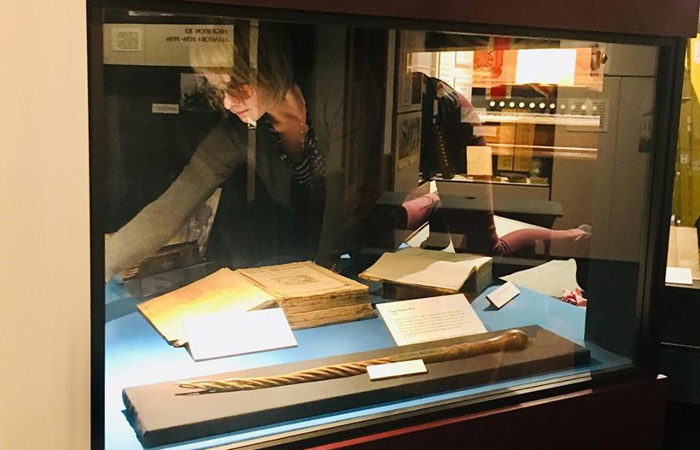Village News
The Joy of Cleaning

About once a year, the curatorial department at Mennonite Heritage Village (MHV) devotes a week or two to one of our favourite parts of our job: cleaning. No, I’m not kidding. There is nothing more satisfying than tidying, scrubbing, and washing all those things we had meant to address throughout the year but didn’t have the time for. And doing it in the weeks before Christmas break means that when we get back to the office, our curatorial and exhibit areas are glowing spaces that will give us motivation and inspiration for our upcoming projects.
Our 2018 project goal was to clean the entire permanent gallery. This was quite an undertaking! Neither Andrea nor I knew when the gallery had been last cleaned. It had certainly been quite a while, as there was a significant layer of dust on the wall panels. As we prepared for this task, we excitedly anticipated using the backpack vacuum cleaner we had purchased in 2017, thanks to funding from the Heritage Grants program.
This project really gave us the opportunity to take it for a spin! Although vacuuming and cleaning the gallery may seem like a low-priority task, it is actually an important part of preventative conservation practices. (Read more about preventative conservation.) Vacuuming dust out of cases and wiping walls and windows not only makes the gallery look more pleasing to visitors; it also helps prevent the deterioration of our artefacts. Keeping the artefacts themselves clean through regular vacuuming and dusting is especially important for their long-term preservation.
Not only did this project give us visual satisfaction of a clean space; it also gave us the opportunity to get a closer look at some of the artefacts that are usually kept behind glass. One that particularly intrigued me was a medicine chest. This chest belonged to Aeltester Franz F. Enns, who practiced homeopathic medicine in the Terek settlement in Russia, and also later in Canada when the family fled from the newly formed Soviet Union in 1918. He brought this chest with him, which was filled with over 100 tiny glass jars of ingredients for his medicines. These include arsenic, cannabis, belladonna, sulfur, and chamomile, to name a few. Many labels on the jars are Russian, while others are from different herbal dispensaries throughout Manitoba and Alberta, indicating that he did continue practicing after migrating to Canada. We didn’t have very long to focus on the medicine chest, but I hope to do more research on the different herbs and remedies Enns used. Stay tuned for a future post!
Our cleaning project also gave us a chance to evaluate the artefacts in the permanent gallery and assess the opportunity for some changes to reinvigorate the gallery in a manageable way. Periodically switching out some of the artefacts for other ones is important not only because it presents different artefacts to visitors. It also helps us to protect and conserve the artefacts we have on display. Because artefacts made of materials like fabric and paper are sensitive to light, we try to rotate our textiles and paper artefacts when possible. In the next month, we will be switching out some of our current artefacts to showcase other ones in our collection, as well as some of our new donations. So keep an eye out!
Although our year-end cleaning project had seemed like it would be a massive task, we were actually able to clean the entire permanent gallery and the artefacts on display in under two weeks! Is it silly that I’m already looking forward to our 2019 project…?




